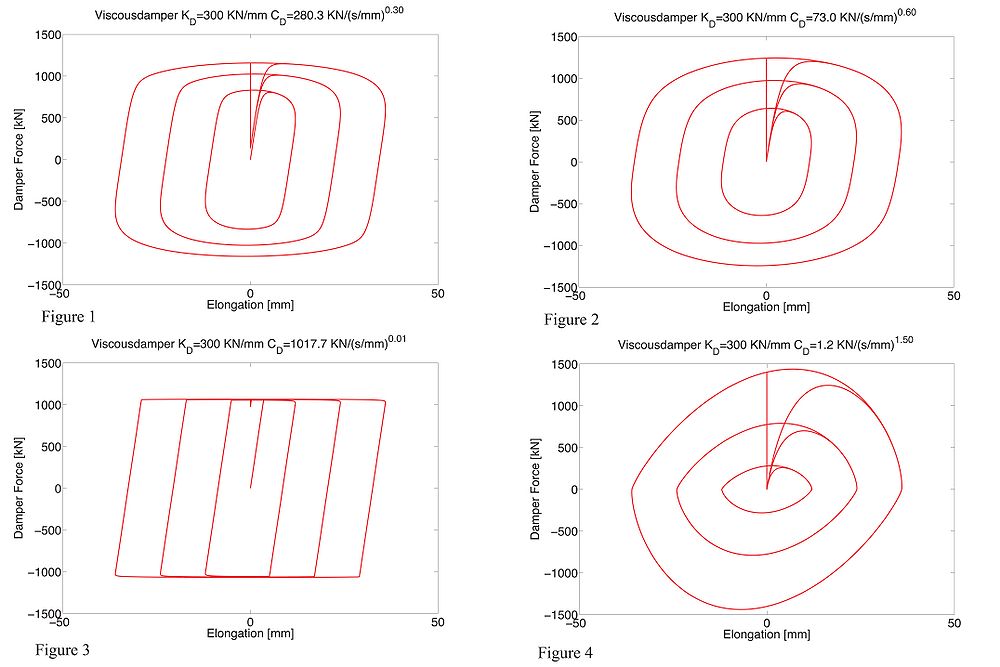ViscousDamper Material: Difference between revisions
Jump to navigation
Jump to search
(Created page with '{{CommandManualMenu}} This command is used to construct a ViscousDamper material, which represents the Maxwell Model (linear spring and nonlinear dashpot in series). The Maxwell...') |
No edit summary |
||
| Line 43: | Line 43: | ||
|- | |- | ||
|- | |- | ||
| '''''[http://opensees.berkeley.edu/wiki/index.php/ | | '''''[http://opensees.berkeley.edu/wiki/index.php/Dynamic Analyses of 1-Story Moment Frame with Viscous Dampers 2. Single story single bay frame with viscous damper]''''' | ||
|- | |- | ||
|- | |- | ||
Revision as of 19:49, 21 August 2013
- Command_Manual
- Tcl Commands
- Modeling_Commands
- model
- uniaxialMaterial
- ndMaterial
- frictionModel
- section
- geometricTransf
- element
- node
- sp commands
- mp commands
- timeSeries
- pattern
- mass
- block commands
- region
- rayleigh
- Analysis Commands
- Output Commands
- Misc Commands
- DataBase Commands
This command is used to construct a ViscousDamper material, which represents the Maxwell Model (linear spring and nonlinear dashpot in series). The Maxwell material simulates the hysteretic response of viscous dampers.
| uniaxialMaterial ViscousDamper $matTag $K $Cd $alpha |
| $matTag | integer tag identifying material |
| $K | Elastic stiffness of linear spring (to model the axial flexibility of a viscous damper (brace and damper portion) |
| $Cd | Viscous parameter of damper |
| $alpha | Viscous damper exponent |
Examples:
| 1. Input parameters: |
| Assume a viscous damper with axial stiffness K=300.0kN/mm, viscous parameter Cd=280.3kN(s/mm)0.3, and exponent a=0.30. |
| The input parameters for the material should be as follows: |
| uniaxialMaterial ViscousDamper 1 300 280.3 0.30 |
| Using these properties, Figure 1 shows the hysteretic response of this damper for sinusoidal displacement increments of 12, 24 and 36mm and a frequency f = 0.5Hz. |
| The sensitivity of the viscous damper with respect to its axial stiffness is shown in Figures 2 to 4 for the following set of parameters: |
 |
| Analyses of 1-Story Moment Frame with Viscous Dampers 2. Single story single bay frame with viscous damper |
References:
| [1] | Olsson, A.K., and Austrell, P-E., (2001), "A fitting procedure for viscoelastic-elastoplastic material models," Proceedings of the Second European Conference on Constitutive Models for Rubber, Germany, 2001. |
| [2] | Ottosen, N.S., and Ristinmaa, M., (1999). "The mechanics of constitutive modelling, (Numerical and thermodynamical topics)," Lund University,Division of Solid Mechanics, Sweden, 1999. |
Code Developed by : Prof. Kazuhiko Kasai (Tokyo Institute of Technology) and implemented by Sarven Akcelyan & Prof. Dimitrios G. Lignos, (McGill University)